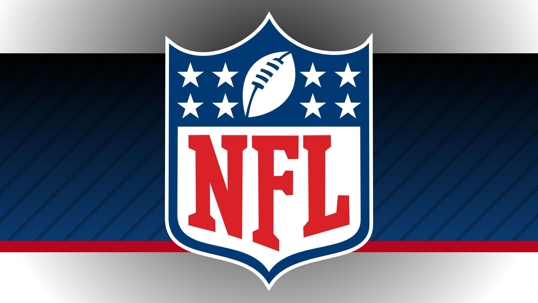
This is not something that will be considered by Judge Richard Berman in Tom Brady’s Appeal of NFL Commissioner Roger Goodell’s arbitration decision but it illustrates a key reason why Goodell was conflicted out of hearing the appeal but also why he should never have undertaken an investigation in January after the AFC Championship Game.
The reason? The destruction of the physical evidence by the NFL.
The only evidence incapable of lying in any investigation or subsequent court case is the physical evidence. It is what trial lawyers look for to buttress or attack the credibility of witnesses. How a fact finder interprets the physical evidence later on is up to that individual but it is always key that the physical evidence is preserved until it gets to the fact finder – a process that is the subject of keen interest to trial lawyers. In the NFL’s investigation, the crucial evidence was the actual footballs that went out onto the playing field prior to the start of the game or, more specifically, the level of inflation in each of the footballs once play commenced. Prior to the game, Referee Walt Anderson made sure that all of the Patriots’ footballs were properly inflated to 12.5 p.s.i. See Wells Report, p. 3. So those same balls – registering at 12.5 p.s.i. under specific conditions before the game – would test pretty close to that number under those exact same conditions after the game, provided they were not tampered with at some point in between.
Here is what happened once the Patriots game balls reached the sideline at the AFC Championship Game:
- At the end of the second quarter, the NFL collected the game footballs of both the Patriots footballs and the Colt’s footballs and they took them back to the officials’ locker room. See Wells Report, p. 65.
- Each of the Patriots 11 balls (the ball the Colts intercepted was not tested) were tested during the 13 minute halftime intermission but only 4 of the Colts footballs were tested because the officials ran out of time. See Wells Report, p. 7.
- Present during the testing were Troy Vincent, NFL Executive VP of Football Operations, Mike Kensil, NFL Vice President of Football Operations and Alberto Riveron, NFL Senior Director of Officiating. See Wells Report, p. 66-67.
- “Before halftime ended, all eleven Patriots balls were inflated and set to a permissible pressure level … The fifteen footballs tested, and the balance of the Colts balls collected at halftime, were returned to the field for use in the second half.” Wells Report, p. 8.
The decision to re-inflate the balls in question and send them back out onto the field for the second half is an astonishing action to take when Troy Vincent and Mike Kensil knew right then and there that there was going to be further inquiry leading to possible, if not probable, discipline. What makes it even more mind-boggling is that there was a second set of Patriots game balls – the “backup balls” – in the officials’ locker-room that Anderson had already properly tested pre-game and which never left the officials’ custody or control after they were tested. See Wells Report, p. 52 – 57. So instead of (a) setting the balls in question aside in a secure setting that would preserve the integrity of the evidence, and (b) using the backup balls in the second half, the League officials – including Troy Vincent, the man who later handed down the initial discipline to Tom Brady and the Patriots – re-inflated the same balls and sent them back out for second half play. By so doing, the NFL forever closed out the opportunity to later test the balls under the same conditions that Walter Anderson tested them before the game – conditions that the NFL expert witnesses concede had a significant impact on the air pressure in the footballs. Instead the game balls were tested under very different conditions during what must have been a harried 13 minute stretch at halftime.
The reason the NFL re-inflated the balls may even have been benign. After all, at the arbitration hearing before Goodell, Troy Vincent agreed that he did not know at the time of the AFC Championship Game that “footballs were going to automatically lose pressure if it was cold outside compared to how warm it was inside”. In the Matter of Tom Brady, Transcript p. 234. But it really doesn’t matter whether the evidence was destroyed because of mere incompetence. What only matters is that, had the NFL executives simply locked up the balls without altering the air pressure at halftime, that simple common sense precaution would have allowed for the matter to be decided conclusively. The accusation by the Colts could have been either proven or disproven at some point after the game or in the days following and the matter wouldn’t be in front of a federal judge days before the start of the 2015 season.
So rather than use the backup balls in the second half, senior officials of the NFL took the only evidence that would conclusively determine the issue of tampering and allowed it to be destroyed and then, ironically, later accused Brady later of destroying his cellphone – ancillary evidence at best – to prevent having it examined by the league. Some might argue that takes unmitigated chutzpah.
Roger Goodell, for his part, should have appointed a true neutral arbitrator without any ties to the NFL to avoid any charges of misfeasance or malfeasance. He chose not to do that. Instead, he exposed himself to charges that he appointed himself as arbitrator in order to erect a firewall between his office and such charges. If that particular conflict of interest was ever raised at the arbitration by the NFLPA attorneys representing Tom Brady, it was not raised in their argument to Judge Berman as an error of procedure representing grounds for vacating Goodell’s arbitration decision.
About the Author: James M. Lynch is a Massachusetts divorce lawyer and Massachusetts family law attorney for Lynch & Owens, located in Hingham, Massachusetts.

